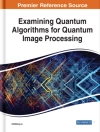With this book, Onn Shehory and Arnon Sturm, together with further contributors, introduce the reader to various facets of agent-oriented software engineering (AOSE). They provide a selected collection of state-of-the-art findings, which combines research from information systems, artificial intelligence, distributed systems and software engineering and covers essential development aspects of agent-based systems.
The book chapters are organized into five parts. The first part introduces the AOSE domain in general, including introduction to agents and the peculiarities of software engineering for developing MAS. The second part describes general aspects of AOSE, like architectural models, design patterns and communication. Next, part three discusses AOSE methodologies and associated research directions and elaborates on Prometheus, O-Ma SE and INGENIAS. Part four then addresses agent-oriented programming languages. Finally, the fifth part presents studies related to the implementation of agents and multi-agent systems.
The book not only provides a comprehensive review of design approaches for specifying agent-based systems, but also covers implementation aspects such as communication, standards and tools and environments for developing agent-based systems. It is thus of interest to researchers, practitioners and students who are interested in exploring the agent paradigm for developing software systems.
Mục lục
A Brief Introduction to Agents.- Agent-Oriented Software Engineering – Revisiting the State-of-the-Art.- Application Impact of Multi-Agent Systems and Technologies: A Survey.- Multi-Agent Systems: A Software Architecture Viewpoint.- Design Patterns for Multi-Agent Systems: A Systematic Literature Review.- Agent Communication.- The Landscape of Agent-Oriented Methodologies.- Prometheus Research Directions.- O-Ma SE: An Extensible Methodology for Multi-Agent Systems.- Ten Years of the INGENIAS Methodology.- A Survey of Multi-Agent Programming.- Languages and Frameworks.- GOAL: A Multi-Agent Programming Language Applied to an Exploration Game.- Unravelling Multi-Agent Oriented Programming.- The Evolution of MAS Tools.- Design and implementation of very large agent-based systems.- Agent Zero: A Framework for Simulating and Evaluating Multi-Agent Algorithms.
Giới thiệu về tác giả
With this book, Onn Shehory and Arnon Sturm, together with further contributors, introduce the reader to various facets of agent-oriented soft ware engineering (AOSE). They provide a selected collection of state-of-the-art findings, which combines research from information systems, artificial intelligence, distributed systems, and soft ware engineering and covers essential development aspects of agent-based systems.
The book chapters are organized into five parts. The first part introduces the AOSE domain in general, including introduction to agents and the peculiarities of soft ware engineering for developing MAS. The second part describes general aspects of AOSE, like architectural models, design patterns, and communication. Next, part three discusses AOSE methodologies and associated research directions, and elaborates on Prometheus, O-Ma SE, and INGENIAS. Part four then addresses agent-oriented programming languages. Finally, the fifth part presents studies related to the implementation of agents and multi-agent systems.
The book not only provides a comprehensive review of design approaches for specifying agent-based systems, but also covers implementation aspects such as communication, standards, and tools and environments for developing agent-based systems. It is thus of interest to researchers, practitioners, and students who are interested in exploring the agent paradigm for developing soft ware systems.
“The present volume is a state-of-the-art collection of articles on agent-oriented soft ware engineering. The articles presented herein address issues from methodologies to programming languages and development platforms. While this volume may not mark the end of the story of agent-oriented soft ware development, it does, I think, represent an important milestone in the history of the field, and will surely prompt much future research and development.”
From the Foreword by Michael Wooldridge, University of Oxford, UK












